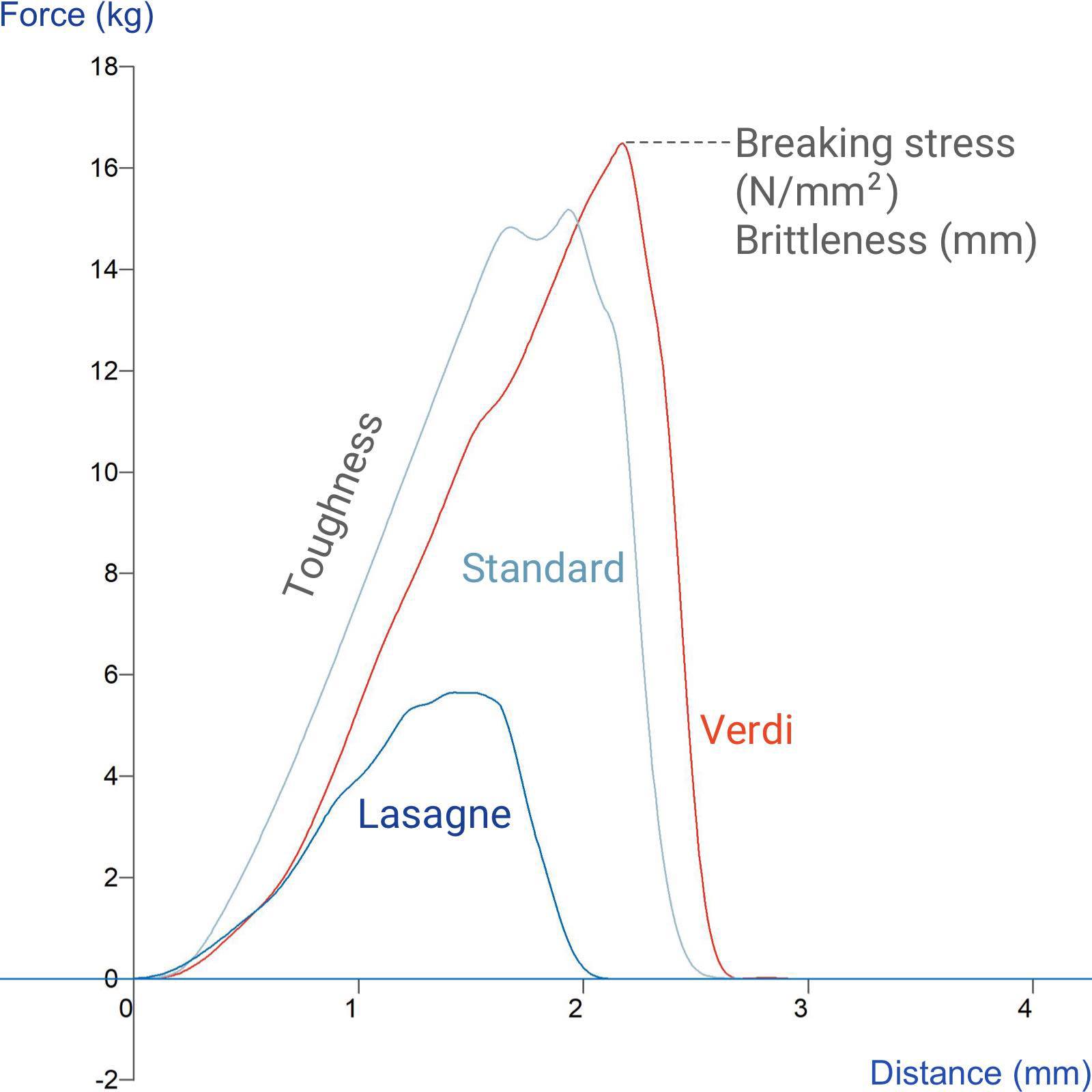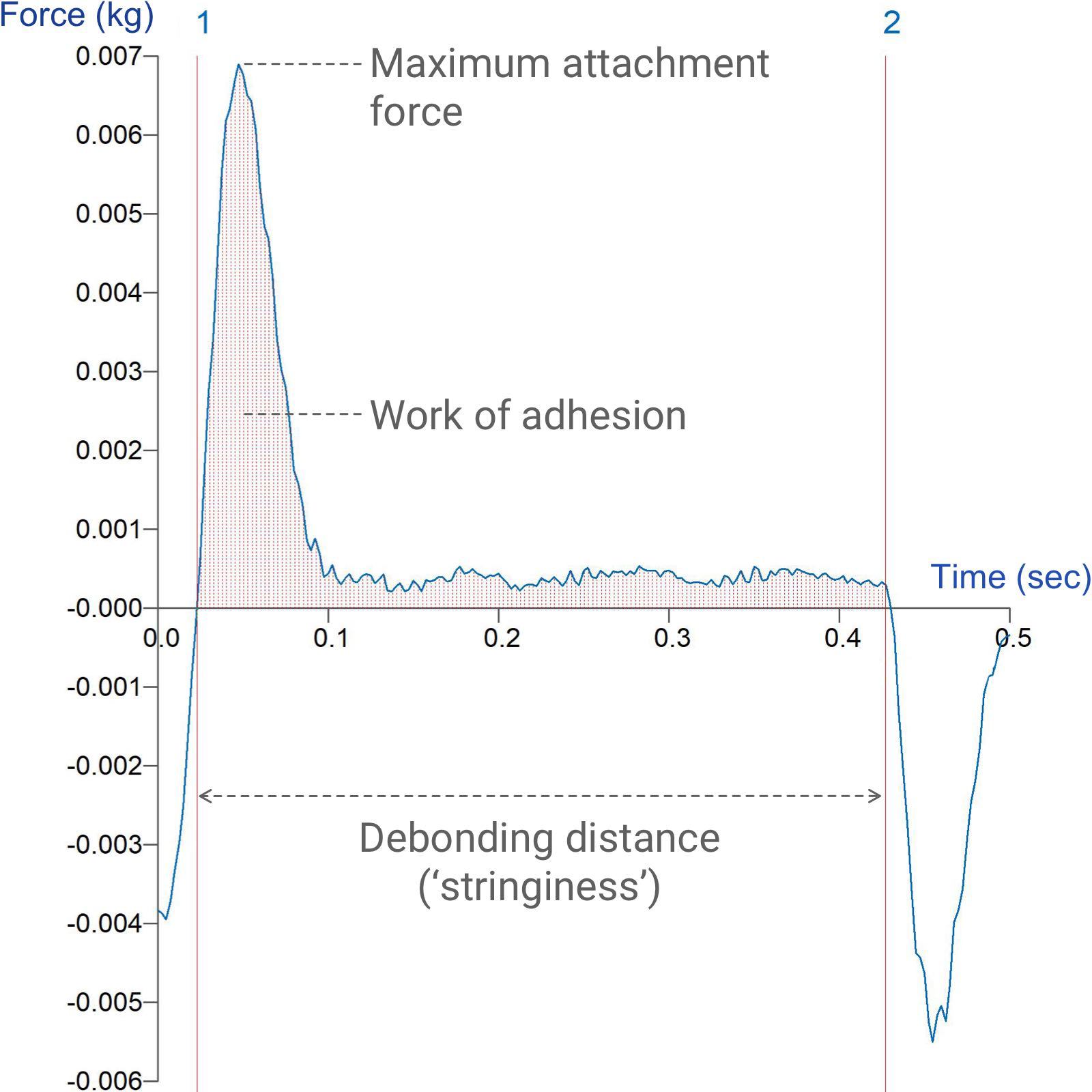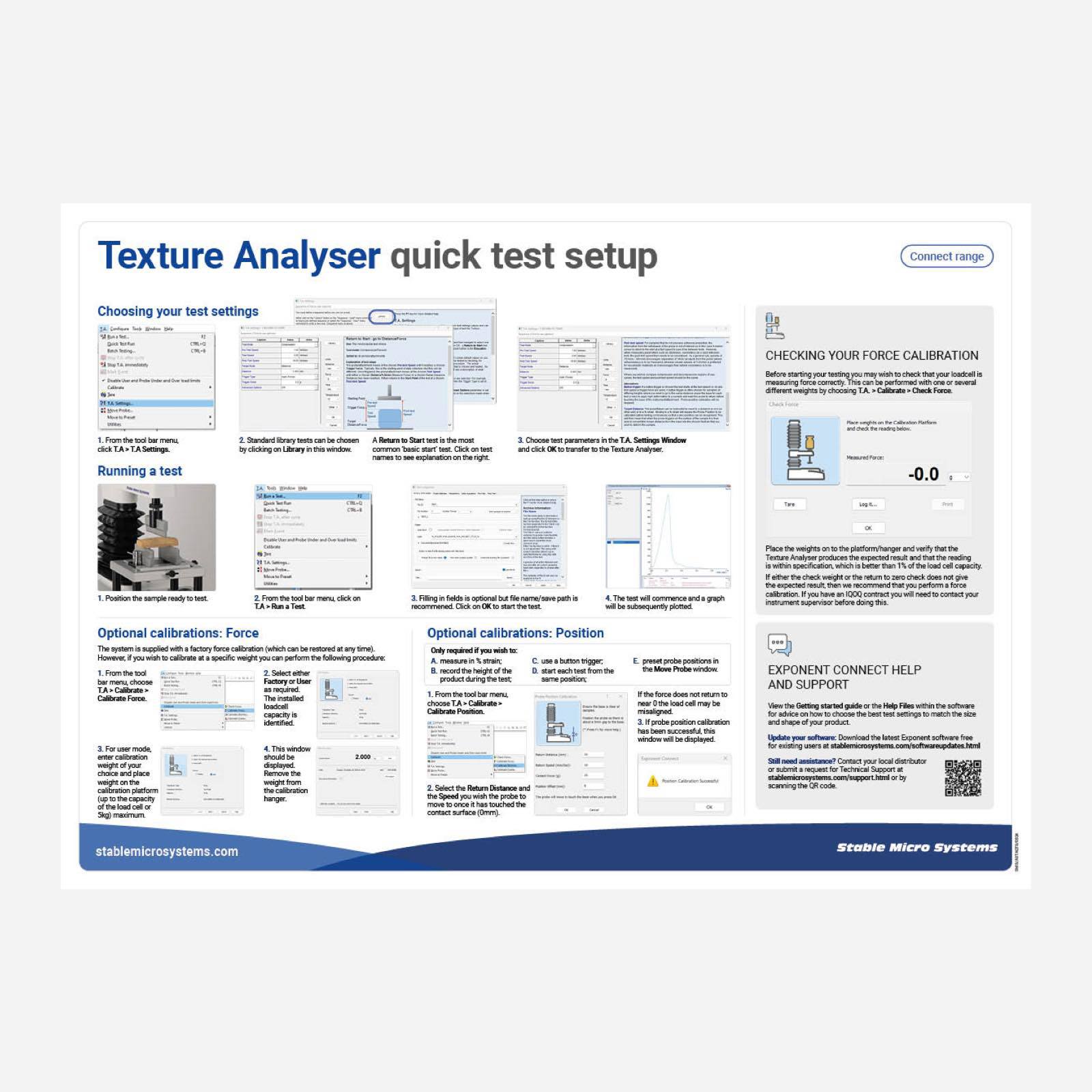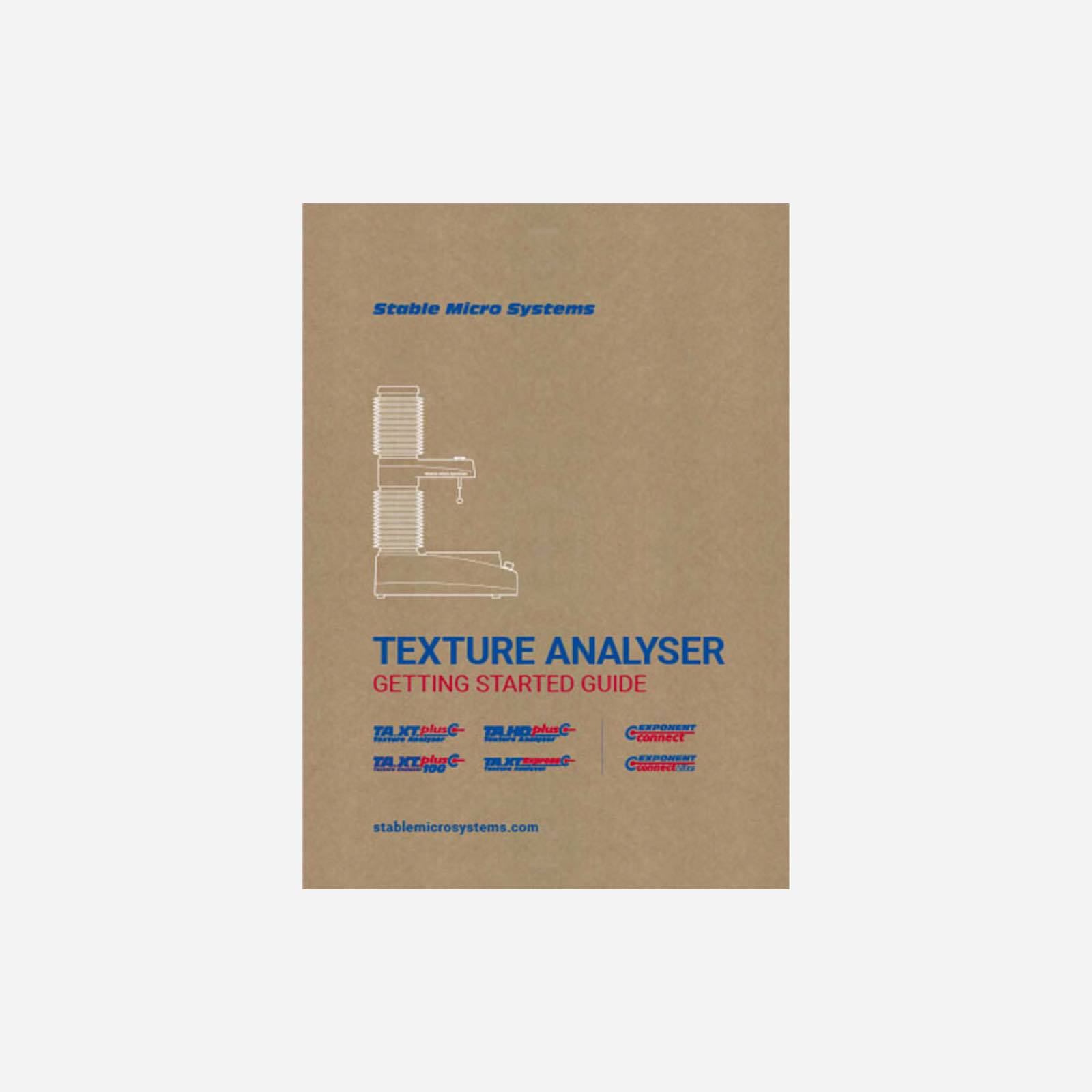
Understanding how a Texture Analyser works – the measurement of distance/displacement
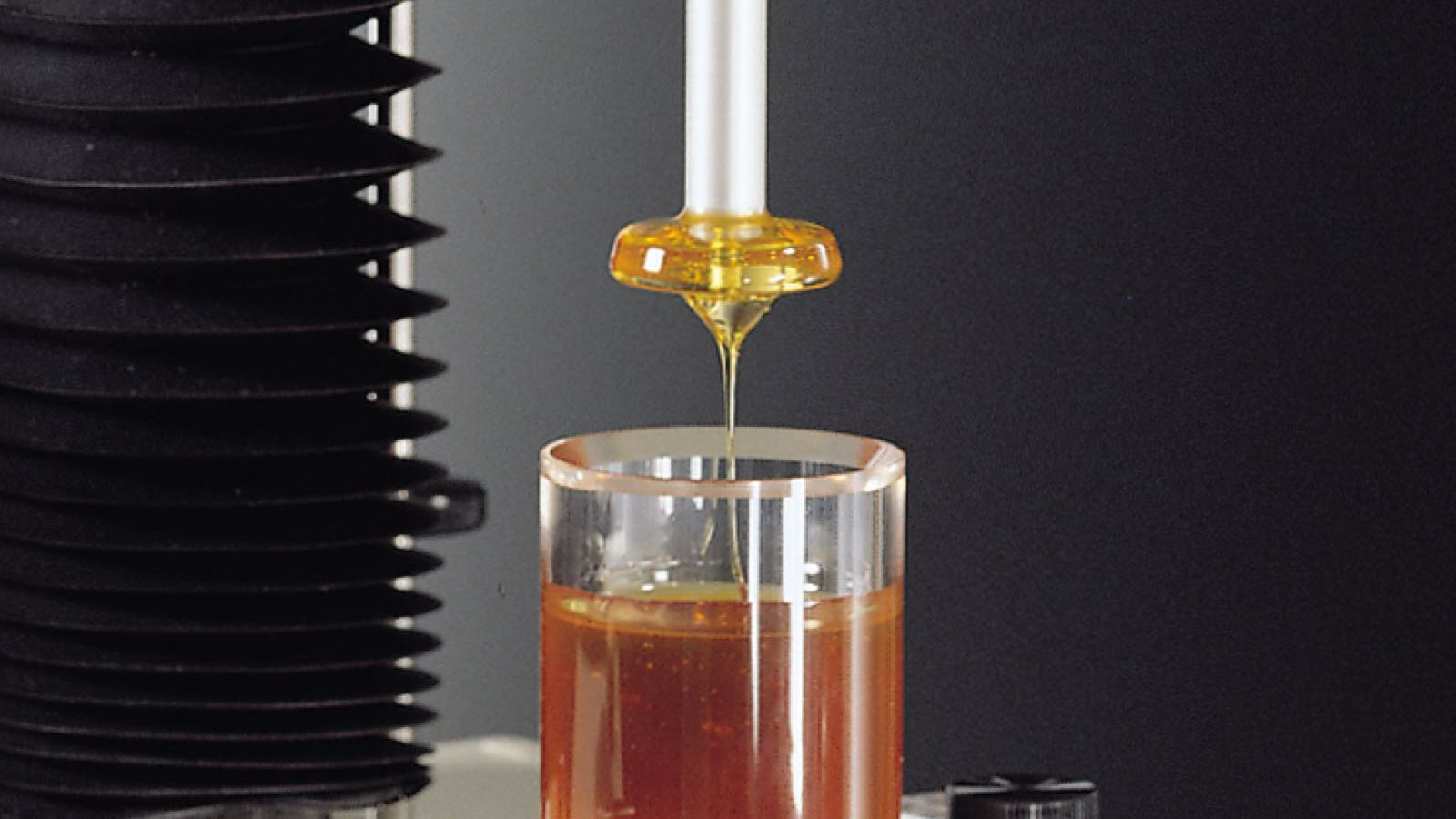
What is distance/displacement measurement?
Distance or displacement measurement in texture analysis refers to the tracking of the probe's movement as it interacts with the sample. This movement is measured precisely to understand how much the sample deforms under applied force. Measurements assist in the development of new materials and products with desired texture/physical properties by understanding deformation behaviour. The accuracy of these measurements is vital for producing reliable and reproducible results.
Types of distance/displacement measurements
Compression tests
- Procedure: The probe moves downwards, compressing the sample until a predetermined force or distance is reached.
- Measurement: The displacement from the initial position to the maximum compression point is recorded.
Tension tests
- Procedure: The probe moves upwards, stretching the sample until it breaks or reaches a predetermined distance.
- Measurement: The displacement from the initial position to the breaking point is recorded.
Bending tests
- Procedure: The probe applies force at a central point on the sample, causing it to bend.
- Measurement: The displacement is measured from the initial position to the maximum bending point.
Interpreting distance/displacement data - Understanding the force-distance curve
- Initial slope: Indicates the material’s hardness or stiffness. A steeper slope means a harder material.
- Peak force: The maximum force applied before the sample deforms significantly or breaks.
- Displacement at peak force: The distance measured at the point of maximum force. The size of this value can indicate whether something is more or less brittle i.e. the further something can be compressed/stretched before major damage/breaking indicates a sample that is less brittle than one that breaks at a short distance.
- Elasticity: The ability of a material to return to its original shape after deformation. Evaluated by the extent of recovery after the force is removed.
This graph shows the penetration of three different gels. Whilst the blue and green lines show gels that require similar forces to rupture, the distance at the rupture point is significantly greater for the green line indicating a gel that is more elastic. The red line shows a gel that requires less force to rupture indicating a gel with less strength and a brittleness/elastic quality that is between both gels.
Typical food applications data that require force-distance axes
Apart from force related parameters, the probe displacement Dp, expressed in mm, is the value of the probe position at Fmax and indicates the elasticity of the skin. Stiffness, is the slope of the first part of the curve measured from the beginning of the curve to Fmax. Work of penetration is the mechanical work needed to reach the rupture point, as is taken as the area under the curve to Fmax. W2 is the work measured (area under the curve) after the skin rupture.
The force to stretch the dough to break point indicates resistance to extension – distance at this point indicates extensibility. A greater distance indicates a more extensible dough.
Typical cosmetic applications data that require force-distance axes
As the load increases the hair extends until it reaches its yield point (the point at which any further displacement will result in permanent (plastic) deformation). Plastic deformation occurs after yielding and as further load is applied the cross-sectional area of the sample will reduce. The sample will fracture when its cross section can no longer support the load being applied. This is the tensile strength of the sample and the total displacement required to break the sample is the extensibility.
Typical materials applications data that require force-distance axes
Once the test has been commenced, the upper grip pulls upwards, subsequently applying tension to the sample. The initial tensile action is indicated by an initial linear increase in force (elastic deformation). As tension proceeds, most samples exhibit permanent deformation until fracture.
Frequently in materials testing, data is required to be displayed as stress vs. strain. Strain is the measure of deformation experienced by the material in response to an applied force, expressed as a ratio of the change in length to the original length.
Distance/displacement sensitivity
Displacement resolution is an important consideration for situations in which subtle changes in distance infer significantly different properties. This is the case in applications such as an adhesive (see below) where the distance of separation of the adhesive from the probe indicates stringiness or the distance to fracture of a brittle sample, such as a cracker, for which each significant figure of a distance value is important.
The accuracy and precision of displacement measurements are determined by the drive mechanism and motor used. Displacement accuracy also depends on the compliance of the mechanical system; this factor may be reduced by performing a frame compliance/bend deflection correction.
Accurately measuring distance or displacement in texture analysis/materials characterisation is essential for understanding the mechanical properties of materials. This measurement provides valuable insights for quality control, product development, and material characterisation. By ensuring proper sample preparation, calibration, and controlled testing conditions, reliable and meaningful distance/displacement measurements can be obtained.
Request a Quick test setup guide poster for placement near your instrument to inform users.
Or if you have lost it, request a comprehensive manual to be emailed to you.




